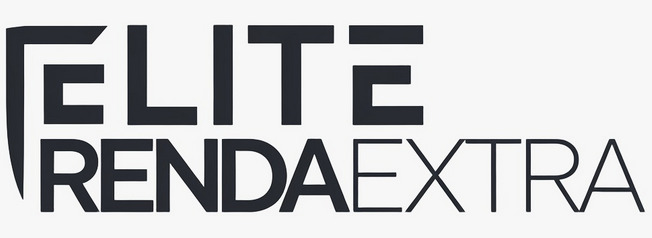Navigating the financial landscape to find a suitable loan in Canada can often feel like a complex journey. With a multitude of lenders, varying interest rates, and different types of loan products available, it’s essential to be well-informed before making a commitment that will impact your financial future.
Understanding the key elements that influence loan approvals and rates is the first step toward securing terms that align with your personal and financial goals. This knowledge empowers you to compare options effectively and approach the process with confidence, ensuring you make a decision that is right for you.
Navigating the World of Loans in Canada
Borrowing money is a common part of modern financial life for many Canadians. Whether it’s for purchasing a first home in Vancouver, financing a car for the daily commute in Toronto, or consolidating debt to simplify finances, loans are powerful tools. However, their effectiveness hinges on finding the right product with the best possible rates. A lower interest rate can save you thousands of dollars over the life of the loan, making the search for favourable terms a worthwhile endeavour.
The Canadian lending market is diverse, comprising major banks, credit unions, and alternative online lenders. Each has its own criteria for lending and its own structure for setting rates. Understanding this landscape is foundational to identifying where you might find the most competitive offers for your specific situation.
Understanding Different Types of Loans Available
Not all loans are created equal. The type of loan you seek will depend entirely on your needs. Familiarizing yourself with the primary categories is a crucial step in your research.
Personal Loans
A personal loan is a versatile option that can be used for a wide range of purposes, from covering unexpected medical expenses to funding a home renovation or a wedding. These are often unsecured, meaning they don’t require collateral. Lenders assess your creditworthiness and income to determine your eligibility and interest rate. Terms are typically shorter than mortgages, often ranging from one to seven years.
Mortgages (Home Loans)
For most Canadians, a mortgage is the largest loan they will ever take on. It is a secured loan used specifically to purchase property, with the property itself serving as collateral. Mortgage rates in Canada are highly competitive and are influenced by factors like the Bank of Canada’s policy rate, bond yields, and the borrower’s financial profile. You’ll encounter options like fixed-rate mortgages, where the interest rate is locked in for a term, and variable-rate mortgages, where the rate can fluctuate.
Auto Loans
Specifically designed for financing the purchase of a new or used vehicle, auto loans are also secured loans, with the vehicle acting as collateral. These can be obtained through dealerships, banks, or credit unions. The loan term, vehicle age, and your credit history are significant factors in determining the interest rate you’ll be offered.
Debt Consolidation Loans
If you’re managing multiple high-interest debts, such as credit card balances, a debt consolidation loan can be a strategic move. This involves taking out a new, single loan to pay off all other outstanding debts. The goal is to secure a lower overall interest rate and simplify your monthly payments into one manageable amount.
Key Factors That Influence Your Loan Rates
Why do two people with similar incomes get offered vastly different interest rates? Lenders assess a variety of factors to gauge risk. Understanding these can help you position yourself more favourably.
Your Credit Score and History
This is arguably the most critical factor. Your credit score, a three-digit number provided by credit bureaus like Equifax and TransUnion Canada, is a snapshot of your financial reliability. A higher score indicates a history of responsible borrowing and timely payments, which reduces the lender’s risk. Consequently, borrowers with excellent credit are typically rewarded with the lowest interest rates.
Income and Employment Stability
Lenders need assurance that you have a stable and sufficient income to make your loan payments. They will look at your employment history, your current salary, and your debt-to-income ratio (the percentage of your gross monthly income that goes toward paying debts). A steady job and a low debt-to-income ratio signal financial stability.
The Loan Term and Amount
The duration of the loan (the term) and the amount you wish to borrow also play a role. Shorter loan terms often come with lower interest rates but higher monthly payments. Conversely, longer terms mean lower monthly payments but you’ll likely pay more in total interest over the life of the loan. A larger loan amount may also sometimes secure a slightly better rate, though this is not always the case.
The Economic Climate in Canada
Broader economic conditions are at play. The Bank of Canada’s overnight rate influences the prime rates set by commercial banks and lenders. When the central bank’s rate is low, consumer loan rates tend to follow suit, making it a more favourable time to borrow.
How to Compare Loan Offers Effectively
When you start receiving offers, a direct comparison is essential. It’s important to look at the complete picture, not just the advertised interest rate.
Look Beyond the Interest Rate
Pay close attention to the Annual Percentage Rate (APR). The APR provides a more accurate representation of the cost of borrowing because it includes not only the interest rate but also most of the mandatory fees associated with the loan. An offer with a slightly higher interest rate but lower fees could have a lower APR than a competing offer.
Fixed vs. Variable Rates
Consider your risk tolerance. A fixed rate provides predictability; your payment will not change for the duration of the term. A variable rate may start lower but can change based on market fluctuations, meaning your payment could increase or decrease.
Reading the Fine Print
Always review the loan agreement for any additional clauses. Are there penalties for making extra payments or paying the loan off early (prepayment penalties)? Are there administrative fees or other hidden costs? Understanding these details is vital for an accurate comparison.
Preparing Your Loan Application
Being prepared can streamline the application process. While requirements vary between lenders, most will ask for similar documentation. Typically, you should be ready to provide proof of identity (government-issued ID), proof of address, proof of income (such as pay stubs, T4 slips, or a letter of employment), and details of your existing assets and liabilities. Having this information organized will demonstrate that you are a serious and prepared applicant.
Making an Informed Financial Decision
Securing a loan is a significant financial step. The path to finding the best rates in Canada is paved with research and understanding. By comprehending the different types of loans, the factors that shape interest rates, and how to properly compare offers, you place yourself in a position of strength. This foundation of knowledge allows you to navigate the lending process not as a passive applicant, but as an informed consumer making a strategic choice for your financial well-being.

